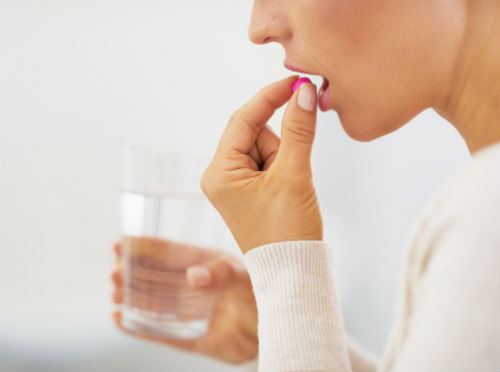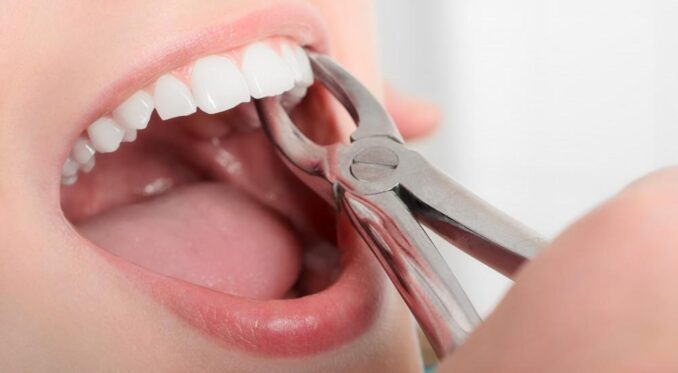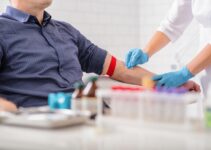Welcome to the tooth extraction party. If you are here, it means that you have just undergone a dreaded dental procedure and now have to wait for your wounds to heal properly. Not fun! But don’t worry, we are here to help you get back on track as soon as possible. In this blog post, we’ll share with you some useful tips and tricks that will accelerate the healing process.
1. Take prescribed pain medication

Source:cdc.gov
After tooth extraction, your dentist will probably prescribe pain medication to help manage any discomfort or pain. It is important that you take the prescribed or over-the-counter medications, such as ibuprofen and acetaminophen, exactly as directed. These can help ease any swelling and discomfort in the days immediately following your procedure, as well as improve your overall healing process.
You will most likely have an initial prescription for a stronger analgesic to help manage more severe pain in the first few days after your extraction. As time passes after surgery and the discomfort decreases, you may switch to an over-the-counter medication if recommended by your doctor. Be sure to follow all instructions closely when taking these medications and avoid taking more than what is prescribed by your healthcare team. Always review possible side effects with your dental team prior to taking these medications.
2. Apply an ice pack to reduce swelling

Source:stlukesoms.com
One of the most effective treatments to reduce swelling and discomfort after a tooth extraction is to apply an ice pack. Applying firm pressure with an ice pack causes small vessels in the area to constrict, reducing the flow of inflammatory cells.
Make sure you wrap it in a lightweight cloth so there’s no direct contact with your skin. Place the ice pack on your cheek for 10 minutes at time intervals throughout the first 24 hours after the procedure. This will help reduce the pain and swelling caused by bruising. You can also use cold compresses, such as clean cloths soaked in cold water, for short periods of time with similar results. However, do not apply heat because it may increase painful inflammation and delay healing.
3. Bite down on a gauze pad
Bite down on a gauze pad soaked in warm salt water with constant pressure for up to 45 minutes after the procedure. This will aid the blood clot felt in the extraction socket and protect the site while new tissue receives time to form. Salt water solutions have antibacterial properties so they can help with blood flow and prevent any infections as well. Make sure to use freshly boiled and cooled water with half of a teaspoon of salt mixed within. Change the solution every 20 minutes as needed until bleeding lasts for no more than 45 minutes.
4. Avoid drinking through a straw
Drinking through a straw can lead to air pockets forming in the extraction site and reduce the healing process. Additionally, sucking and swallowing liquids through a straw can loosen the clot that has formed at the extraction site, leading to further bleeding and pain.
When drinking water or other fluids, you may need to tilt your head back slightly or gently pour the liquid over the extraction site. This will help prevent suctioning which could lead to postoperative complications like dry sockets. To minimize the risk of dry sockets, follow your dentist’s food and drink recommendations for at least 48-72 hours after you receive an extraction treatment.
5. Avoid hot and spicy foods
When eating or drinking, it is important to be mindful of the foods and beverages we consume. Hot and spicy foods can become uncomfortable or painful to consume due to their temperature and components that can irritate the digestive system.
Additionally, hot beverages such as coffee and tea should be consumed at a temperature deemed comfortable in order to avoid any discomfort potentially caused by possible heat damage. Furthermore, consumption of carbonated beverages such as soda should also be limited as they may trigger GERD symptoms due to the pressure inside these drinks which both weakens the lower esophageal sphincter muscles and increases gastric acid production. Click here to learn more about what to eat after the tooth extraction.
6. Rinse your mouth with warm salt water
Rinsing your mouth with a warm saltwater solution can help reduce swelling, ease pain, and speed up the healing process after tooth extraction. An isotonic solution – one teaspoon of salt dissolved in 8 ounces of water – is generally recommended. Swishing the solution throughout your mouth for around 30 seconds will help to remove debris from the affected area and aid in cleaning the wound.
After rinsing with the saltwater solution, use an antiseptic rinse such as hydrogen peroxide or alcohol-free chlorhexidine gluconate (CHG) to reduce bacteria and promote healing. You should use this rinse twice daily following your tooth extraction.
7. Brush your teeth gently

Source:sanpablosmiles.com
When brushing your teeth, use a soft toothbrush with gentle strokes across both extracted and surrounding areas of your mouth. Brush your teeth twice a day but be sure to avoid vigorously scrubbing in areas where you had surgery. In addition, it is recommended to use an antibacterial rinse twice daily from day two and onwards, but skip rinsing on the first-day post-surgery so you don’t disturb the blood clot.
8. Avoid smoking
Smoking can inhibit the healing process after tooth extraction. Not only can smoking affect healing by reducing blood flow to the area, but compounds in cigarettes can also harm soft, newly healed tissue more easily than old, hardened scar tissue. Because of this potential for delayed healing, dentists will often recommend that you don’t smoke for at least 24 hours after tooth extraction.
Avoiding all tobacco products not just cigarettes is also important. Additionally, avoiding alcohol as much as possible is recommended so that it doesn’t interfere with proper healing or reduce the effectiveness of any medications prescribed by your dentist to help with pain and inflammation.
9. Get plenty of rest
Staying in bed and avoiding strenuous activities gives your body more energy to heal the wound. You should take at least a day or two off from work or school so that you can rest. Avoid any strenuous activities or sports for at least 72 hours after your surgery, depending on your doctor’s instructions.
Be sure not to clench your jaw or grind your teeth during the healing process. If you are worried about grinding, using a mouth guard can help reduce pressure on the area that is healing and minimize discomfort for up to several weeks after the procedure.
Conclusion

Source:pinterest.com
To sum up, these are a few things you can do to speed up the healing process after having a tooth extracted. Be sure to follow your dentist’s instructions for caring for the extraction site. This includes keeping the area clean and free of bacteria. You can also eat foods that are rich in vitamin C to help promote healing. Finally, get plenty of rest and avoid smoking, as both of these can delay healing.





